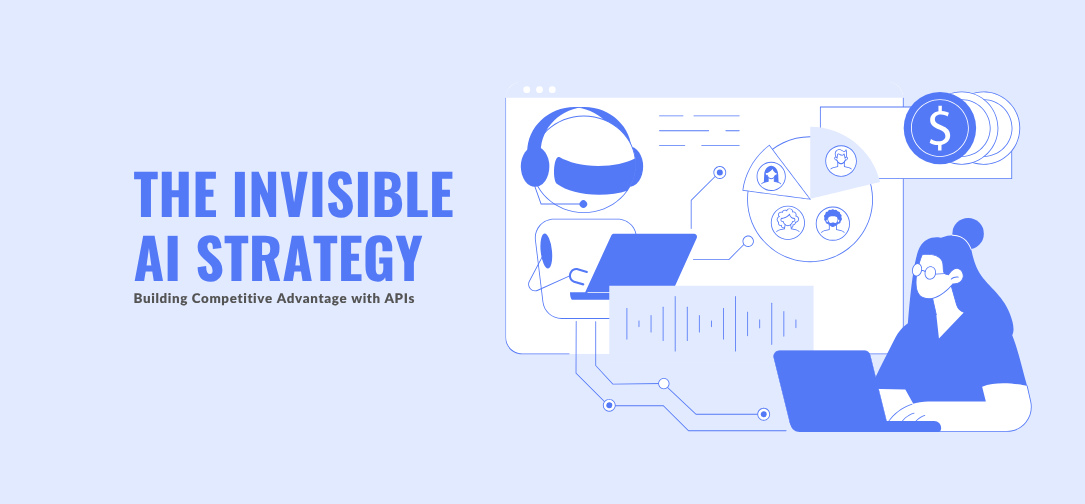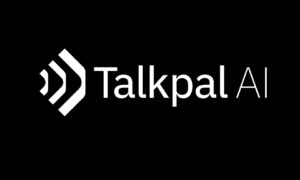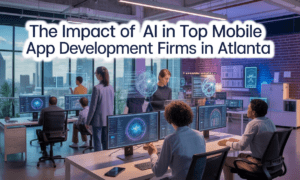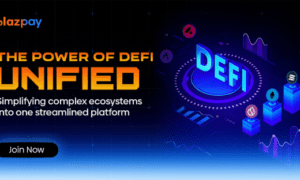When organizations talk about adoption of AI, the conversation often jumps straight to the latest models that promise to predict, automate, and optimize everything. But the truth is, most organizations aren’t ready to fully embrace AI not because they lack access to models, but because their systems, processes, and mindset aren’t built for it.
At the heart of this readiness challenge lies something deceptively simple: APIs.
APIs, or application programming interfaces, might sound like a technical detail. In reality, they are the nervous system of digital businesses, the invisible connectors that allow systems to talk to each other, partners to collaborate, and customers to experience seamless, integrated services.
For companies like Block Inc. (formerly Square), an API-first mindset has been the foundation for scaling innovation, empowering AI tools, and building an open ecosystem that thrives on developer contributions. For legacy enterprises, the story is more complex but equally instructive.
This article explores what APIs really mean for business enablement, how API-first and API-led strategies differ, and why investing in APIs today is critical for building AI-powered businesses tomorrow. We’ll also examine the shifts in mindset and leadership that are required for both startups and enterprises and what future leaders need to learn to stay ahead.
APIs: The Hidden Engine of Business Enablement
In their earliest days, APIs were a technical necessity tools that helped software components communicate. But their role has expanded dramatically. Today, APIs are business enablers:
- They unlock new revenue streams (think Stripe’s payments-as-a-service model).
- They allow companies to scale globally without scaling complexity (like Uber integrating mapping, payments, and logistics services through APIs).
- They power partner ecosystems, enabling external developers to create value on top of a company’s platform (as seen with Shopify, Salesforce, and Twilio).
The modern business landscape is shaped by APIs, even if they remain invisible to most customers. The question is no longer whether to use APIs but how to strategically design and manage them to create flexibility, scalability, and innovation.
The API Journey: From Integration Tools to AI-Ready Infrastructure
APIs have evolved alongside the digital economy.
- In the past, APIs were internal tools to stitch together legacy systems.
- Today, they are external-facing products designed for consumption by partners, developers, and increasingly, AI agents.
- Tomorrow, APIs will serve as the primary interface between AI systems and the business world.
This shift means businesses must rethink their API strategies, not just as technical integrations, but as business architecture decisions. Without APIs, AI agents won’t have access to data, systems, or processes. APIs are the gateway to intelligence.
Decoding API-First, API Adoption, and API-Led Strategy
Let’s clarify the terms that often get used interchangeably but mean different things:
- API-First Strategy is a design philosophy: Build APIs before applications. Treat APIs as first-class products. This ensures consistency, modularity, and scalability.
- API Adoption Strategy is a transformation journey: Integrate APIs into existing (often legacy) systems, modernizing while maintaining continuity.
- API-Led Strategy is a business-wide approach: Use APIs as the foundation for scaling products, integrating partners, and enabling AI-driven innovation.
Think of it this way: API-first is about how you build. API adoption is about how you transition. API-led is about how you operate.
Why Invest in API-Led Thinking?
The payoff for getting APIs right is significant:
- Speed: APIs allow teams to innovate faster by building on existing capabilities.
- Flexibility: APIs enable integration with partners, customers, and AI tools.
- Scalability: APIs create a modular architecture that grows with the business.
- Ecosystem Growth: APIs allow external developers to build on your platform multiplying your impact.
But there’s a catch: This shift requires more than technology. It demands a cultural and organizational transformation:
- Leaders must view APIs as strategic assets, not backend tools.
- Teams must embrace cross-functional collaboration, where developers, product managers, and business leaders align on API design.
- Businesses must build governance frameworks to ensure API security, versioning, and discoverability.
Block Inc.: From Square to a Multifaceted Financial Ecosystem
Founded in 2009 by Jack Dorsey and Jim McKelvey, Block Inc., originally known as Square Inc., began as a solution to enable small businesses to accept card payments via mobile devices. Over time, the company expanded its portfolio to include:
- Square: A comprehensive point-of-sale system that allows businesses to manage sales, inventory, and customer relationships.
- Cash App: Launched in 2013, this mobile payment service enables peer-to-peer money transfers, stock and bitcoin investments, and tax filing. As of 2024, Cash App boasts 57 million users and $283 billion in annual inflows .
- Afterpay: Acquired in 2022, this “buy now, pay later” service allows consumers to make purchases and pay in installments.
- TIDAL: A music streaming platform acquired in 2021 to support artists and offer high-fidelity audio streaming.
- Bitkey: A self-custody bitcoin wallet launched in December 2023, enabling users to manage their bitcoin holdings securely .
Block’s mission centers on economic empowerment, aiming to provide accessible financial tools to individuals and businesses worldwide.
Embracing an API-First Strategy
Block’s diverse product suite is unified by a robust API infrastructure. By adopting an API-first approach, the company ensures that each service can seamlessly integrate with others, fostering a cohesive ecosystem. This strategy allows for:
- Modularity: Each product can function independently yet integrate smoothly with others.
- Scalability: New services can be added without disrupting existing systems.
- Developer Engagement: External developers can build upon Block’s platforms, extending functionality and fostering innovation.
Introducing ‘Goose’: Bridging AI and APIs
In early 2025, Block unveiled “Goose,” an open-source AI agent framework designed to translate large language model outputs into real-world actions.Block is exploring the use of Goose to assist developers and potentially expand access to non-technical contributors.
- Code Generation: Assisting developers by writing and refining code.
- Automation: Executing tasks like running tests, installing dependencies, and managing files autonomously.
- Accessibility: Empowering non-engineers to prototype applications, democratizing the development process .
By leveraging its API-first infrastructure, Block ensures that Goose can interact seamlessly across its various platforms, exemplifying the synergy between APIs and AI.
Becoming AI-Enabled: Beyond the Obvious
For business leaders, the path to AI readiness starts with APIs but it doesn’t end there. Here are the key elements to focus on today to build AI-enabled, API-first organizations tomorrow:
Design APIs for AI Agents, Not Just Humans
APIs must be clear, consistent, and machine-readable. This means:
- Following standards like OpenAPI/Swagger.
- Embedding semantic clarity (clear naming, data types, error handling).
- Thinking about how AI agents will discover and chain APIs together in workflows.
APIs aren’t just for developers anymore; your next API user is an AI agent.
Invest in API Governance and Guardrails
AI brings powerful capabilities but also risk.
- Set strict access controls on sensitive APIs (e.g., financial data, PII).
- Implement rate limits, authentication standards, and versioning policies.
- Build in audit trails knowing who (or what) accessed your APIs, when, and for what purpose is critical for compliance and risk management.
AI without governance is a liability, not an asset.
Balance Openness with Control
APIs thrive when they are open but not too open.
- Decide which APIs are public, which are for partners, and which stay internal.
- Understand the business models: Are you monetizing APIs (like Stripe) or using them to grow your ecosystem (like Shopify)?
- Build a tiered access model not all users or AI agents should have the same permissions.
Think in Terms of Ecosystems, Not Just Products
APIs enable more than internal efficiency; they create new revenue streams, partner integrations, and external innovation.
- Ask: How can others build on top of us?
- Imagine your business as a platform, not just a product.
- This is how you scale AI impact by enabling other AI agents, partners, and developers to create value on your foundation.
Prioritize Developer Experience (DX)
Good APIs reduce friction, bad APIs create barriers. For AI to thrive, your APIs must be:
- Discoverable: Easily found via documentation and directories.
- Usable: Clear, well-documented, with example payloads and error codes.
- Reliable: Fast, secure, and monitored for uptime.
Developer experience is no longer just about speeding up human teams, it’s about enabling AI systems to build, test, and deploy at scale.
Prepare for AI as a Business User
Your next “employee” might be an AI agent. This changes how you think about:
- Access rights: What systems and data should AI agents be allowed to access?
- Decision autonomy: When should AI act on its own, and when should it escalate?
- Risk management: How do you monitor, control, and course-correct AI actions across your API landscape?
Conclusion: APIs as Your AI Readiness Strategy
The future of AI isn’t just about smarter models, it’s about systems that can act. And systems can’t act without access. APIs are that access.
Block Inc.’s journey shows what’s possible when you build an API-first foundation enabling not just human developers, but AI agents, to innovate and deliver value. For legacy enterprises, the path is more complex, but no less urgent: APIs are the bridge from legacy systems to AI-driven operations.
For business leaders, the takeaway is clear:
- Understand APIs not as technical plumbing, but as the language your future AI agents will speak.
- Invest in API design, governance, and developer experience today because tomorrow’s AI will depend on it.
- Build with guardrails, not just growth, in mind.
The question isn’t if your AI agents will need to consume your APIs, it’s when. The businesses that prepare for that future today will be the ones shaping it tomorrow.



































